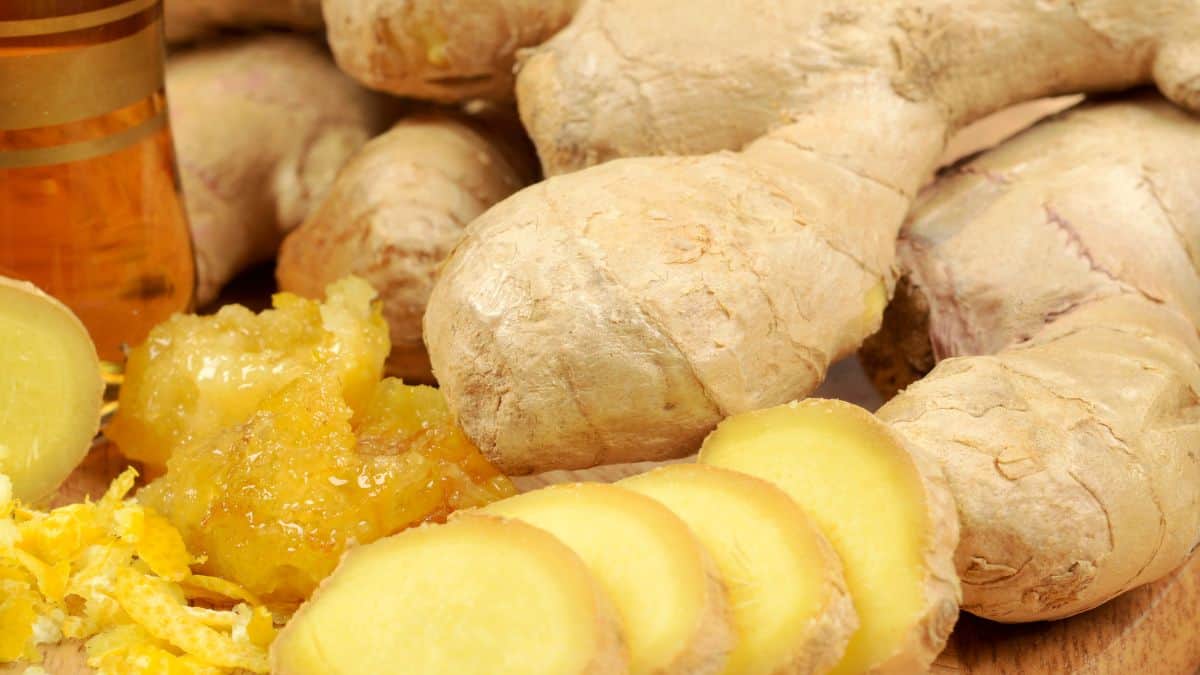Ginger is a popular ingredient used in many dishes, but most people don’t know much about it. For them, it’s all about how it makes the food taste, and yes, it does add flavor and nutrition to your food. But is ginger supposed to be spicy?
Ginger is spicy because it contains the chemical compound shogaol (the chemical compound responsible for its spicy taste). Ginger is added to a dish to make it spicy. The
Fresh ginger causes a burning sensation when consumed. Ginger’s
Is Ginger Always Spicy?
There will always be a noticeable presence of ginger’s sharp flavor. The freshness of the ginger, on the other hand, is what determines the level of heat in the dish. If the ginger is ground and dried, there is a good chance that the
This is due to the fact that drying and grinding ginger reduces the amount of gingerol, which is the chemical compound that gives ginger its robust flavor, but does not affect the amount of shogaol.
However, if the ginger is fresh, the gingerol will still be in its unaltered form, and the ginger will have a flavor that is fiery and pungent. Even though shogaol is still present in the ginger, it is difficult to detect because gingerol is more prominent.
Note that ginger is available in more than just ground and fresh forms; pickled ginger and crystalline ginger are also available. Ginger in its dried form is known to have the most pungent flavor. The older ginger is, the spicier it tastes.
Making Your Spicy Ginger Less Spicy
You might not like ginger because of how spicy it is. If you try ginger for the first time and find that the
Increasing the Quantity of Other Ingredients
Adding more of the ingredients that were used to prepare the dish is one of the many methods that can be utilized to lessen the intensity of the ginger’s spicy flavor.
If you reintroduce the ingredients, the other flavors will overpower the ginger, and you’ll be able to savor the rest of your meal.
Mix In Some Sugar
The spicy flavor of the ginger can be tamed by adding a teaspoon of sugar to the dish. Adding a teaspoon of sugar can help to reduce the spicy flavor of the ginger.
You should add the sugar, then mix and taste the mixture. If the strong ginger flavor remains, repeat the process.
Add a Little Cream
If you can or if it complements your dish, you may add a small amount of milk, coconut milk, or yogurt to your dish to overpower the ginger’s flavor.
The Similarity and Difference Between Ginger and Tumeric
Ginger and turmeric are both members of the same plant family and have similar physical characteristics.
They have properties that help reduce inflammation, and are abundant in vital nutrients. Turmeric and ginger are both rhizomes (fleshy underground stems) from the Zingiberaceae family.
Before being used, they are peeled, and they can be purchased fresh, dried, or in powder form.
Although they are largely similar physically, there are little differences between them and they are highlighted below:
| Ginger | Turmeric |
|---|---|
| Exterior is light brown with a slight silvery sheen. | Exterior is slightly yellow. |
| Interior is a vibrant orange color. | Interior is a pale yellow color with a hint of green. |
| Peppery flavor with a lemon undertone. | Tastes bitter and earthy. |
Nutritional Value of Ginger
The medicinal plant’s root contains over 400 compounds, according to chemical analysis. Ginger rhizomes are high in carbohydrates and low in saturated fats. The following table details its nutritional content.
| Nutrition | Size | % Contribution to a daily diet |
|---|---|---|
| Total Fat | 0.8g | 1% |
| Saturated Fat | 0.2g | 1% |
| Sodium | 0.013g | 0% |
| Potassium | 0.42 | 11% |
| Total Carbohydrate | 18g | 6% |
| Dietary Fiber | 2g | 8% |
| Protein | 1.8g | 3% |
This table shows the nutritional content of a 100-gram serving of ginger. A 100 gram serving contains 80 calories.
The Health Benefits of Ginger
Ginger has a high nutrient and bioactive compound content, both of which are associated with a variety of positive health effects.
For instance, its constituent gingerol, which possesses powerful medicinal properties, can help reduce the risk of infection, and ginger extract can inhibit the growth of a variety of bacterial species.
In addition, women who are going through their menstrual cycle should consider using ginger because it significantly reduces menstrual pain.
Ginger is also well-known for its effectiveness as a natural treatment for diarrhea. The
Frequently Asked Questions
What Happens If You Eat Too Much Ginger?
Ginger is beneficial for the body, but excessive consumption can be harmful and cause stomach discomfort. It can also cause burping, heartburn, soreness in the mouth, and nausea.
Is it Safe to Consume Raw Ginger?
Yes, you can consume raw ginger. Ginger is a great ingredient that is both healthy and delicious. Additionally, you can add raw ginger to some of your favorite dishes to give them a spicy kick.
What Dishes Ginger Can Be Used In?
Ginger can be used as an ingredient in salads, marinating chicken, making bread, and so on, or it can be used to make ginger-based dishes such as ginger chicken, and coconut-ginger chutney.
Final Words
Ginger has been used for centuries as a medicinal herb. It should be an ingredient that everyone should have in their refrigerator. This rhizome has more to offer than its culinary applications, ranging from its spicy flavor to its medicinal value. We do hope you enjoy all of the benefits and flavor that this incredible ingredient brings to your dish!





